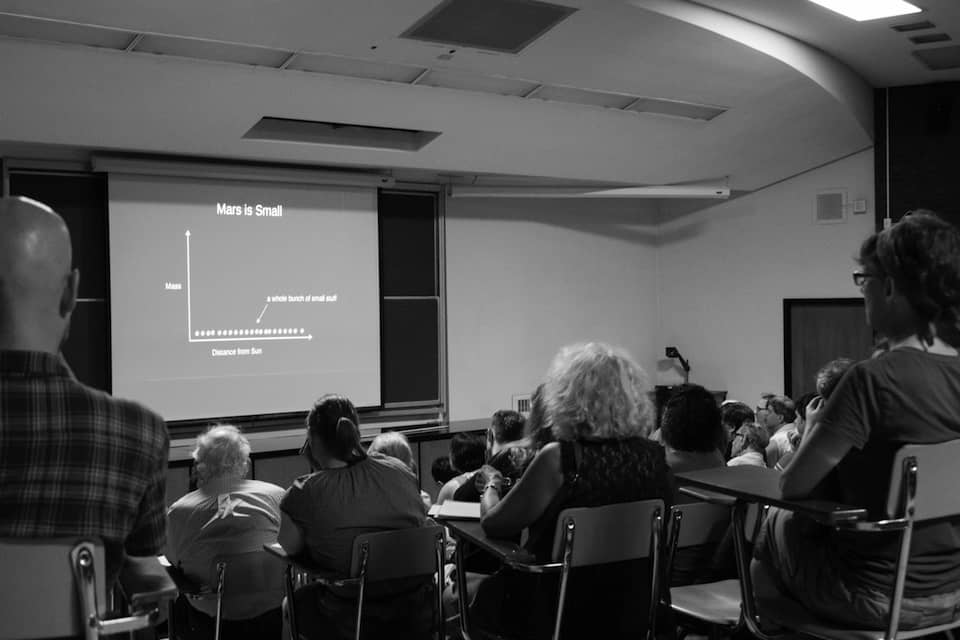On September 3, 2015, the Department of Astronomy and Astrophysics at the University of Toronto hosted the Astronomy Public Tours, known as ‘AstroTours.’ AstroTours is an event operated by graduate students at U of T’s astronomy department. The event, which is comprised of an hour-long talk followed by an hour of planetarium shows and telescope observation, is offered on the first Thursday of each month. The talks are hosted by doctoral students and members of the faculty, on topics ranging from dark energy to the transit method for detecting planets.
This month’s AstroTour talk was hosted by Dr. Christa Van Laerhoven on the formation and migration of planets in the solar system; how asteroids and comets may be used to study planetary migration, and how theories such as the ‘Grand Tack Hypothesis’ and ‘Nice model’ can be used to explain the formation of planets and their movement across the solar system.
Given that these topics may seem challenging, the objective of AstroTours is to create an atmosphere of interest and curiosity, especially for attendees without any background in the sciences. “We’re trying to make [the subject of astronomy] accessible to families, to people of all ages,” explains Heidi White, the manager of the planetarium and one of the executive team members of AstroTours.
“I believe that the point of AstroTours is to make us scientists accessible,” says Van Laerhoven, “having an opportunity to make science not just for us scientists but for everybody.”
To that end, Van Laerhoven’s presentation was packed with attendees of various ages and backgrounds. Although most of the attendees were university students, there were also several little children, as well as alumni.
“It was quite exciting to learn how planets have changed and how they will change in time,” says Jackson Eidelberg, an attendee with a master’s degree in architecture.
Van Laerhoven used various methods during her presentation to keep the crowd interested. For one, she introduced humor to ease in defining scientific terms. As an example, she would include the phrase “holy jargon Batman!” prior to providing definitions for scientific terms. In addition, she used video animations to provide visual examples of her arguments.
“She is well spoken and well-arranged. I wasn’t disappointed; I really loved it and I can’t wait to come back again,” said Sushant Hukeri.
After the talk, planetarium shows and telescope observations became available for attendees. The planetarium show captured a three-dimensional representation of the Rosetta Satellite and the Comet 67P — the comet Rosetta sent a probe to land on -— while the telescope observations offered attendees an opportunity to view Saturn.
Ultimately, the AstroTours event served as a great opportunity for both the attendees and the astronomers to get involved.
“This is a really good way for us to tell the general public what we’re doing, why it’s important and why it’s awesome,” says Charles Zhu, the special events director for AstroTours, adding that, “for those people who are interested, it’s a good way of connecting to the university because they’ll get to have a glimpse of all the stuff that we do here.”
AstroTours is financed by U of T’s Department of Astronomy and Astrophysics and the Dunlap Institute for Astronomy and Astrophysics. It was first hosted during the fall of 1997 and continues to this day. The next AstroTours event is scheduled to take place on October first.


